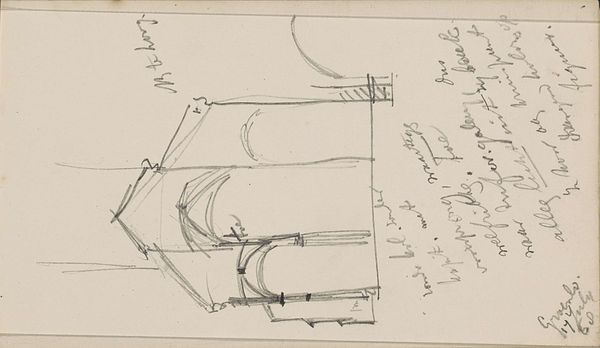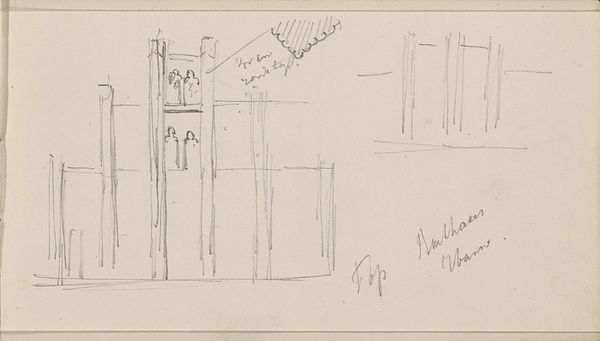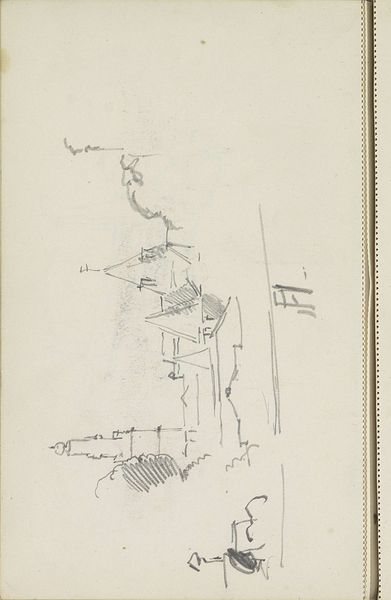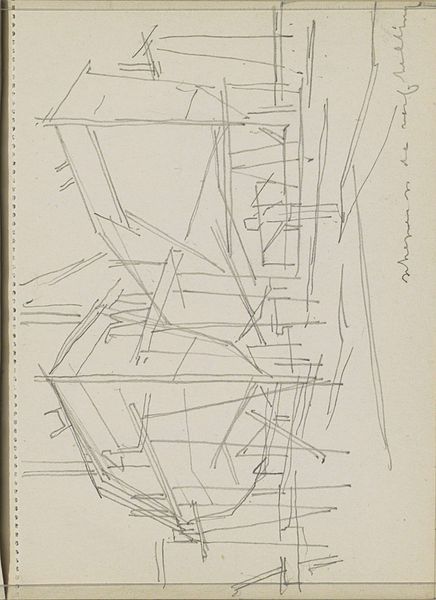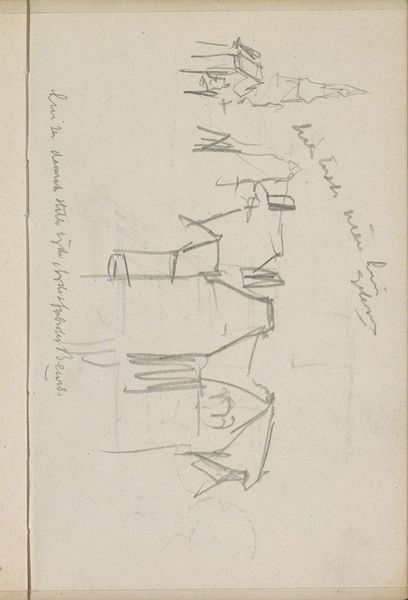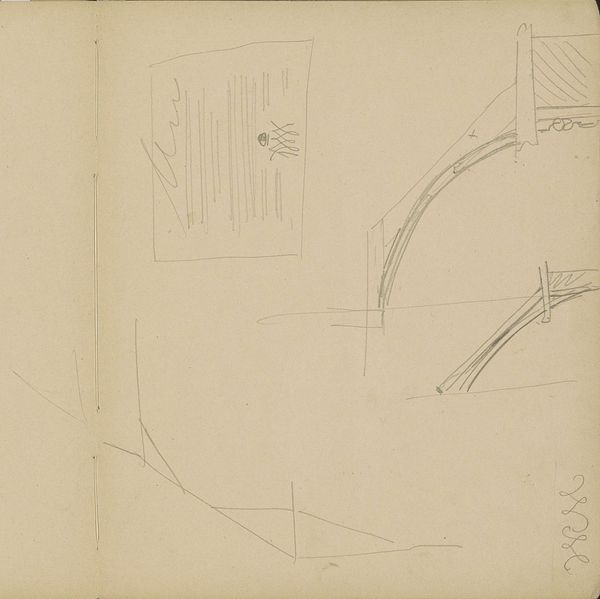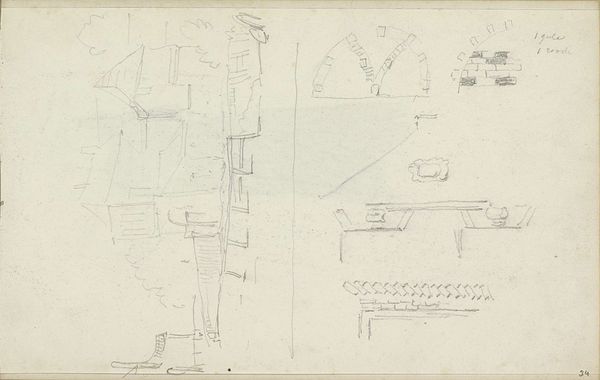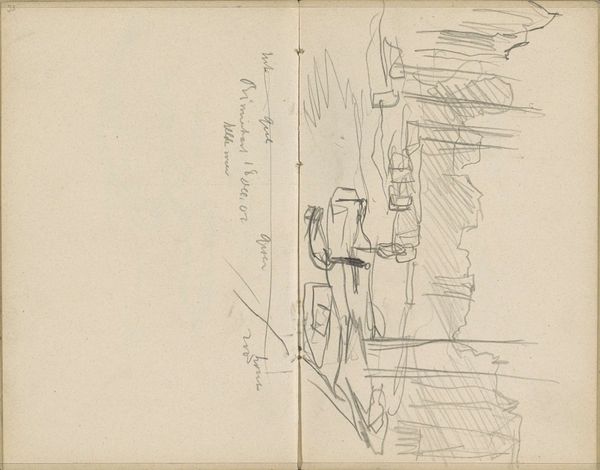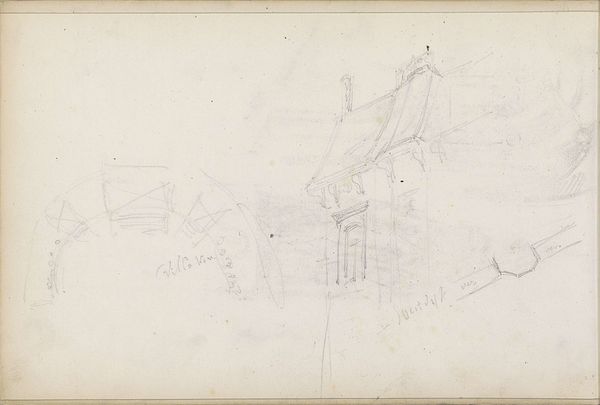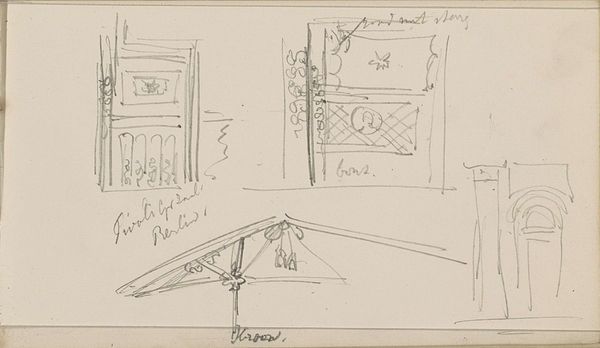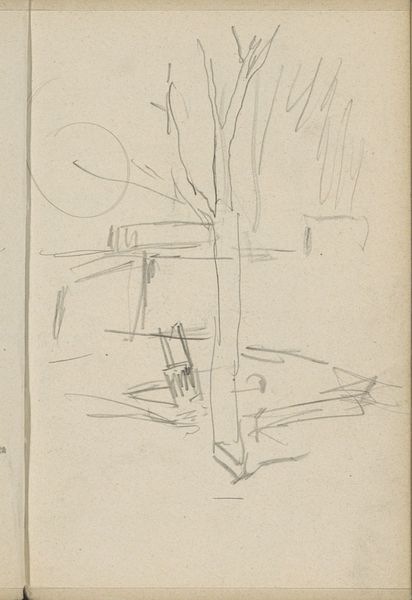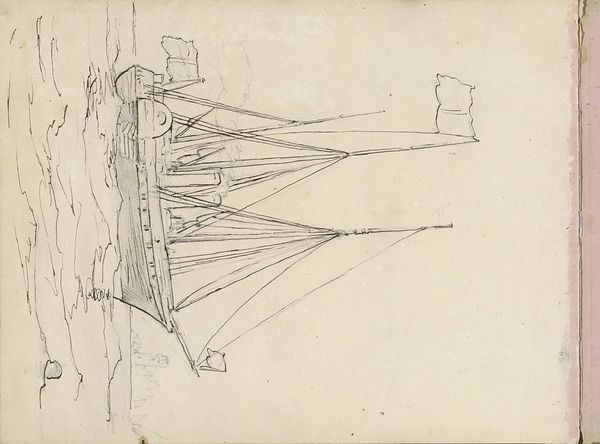
drawing, ink, architecture
#
drawing
#
landscape
#
ink
#
geometric
#
line
#
architecture
#
building
Copyright: Rijks Museum: Open Domain
Curator: This is a sketch entitled "Kap van de sporthal te Hannover," or "Hood of the sports hall in Hanover," rendered by Isaac Gosschalk between 1866 and 1868. It appears to be ink on paper. Editor: It feels very raw, almost like looking at an architect's thought process laid bare. The lines are tentative, exploratory. There's a wonderful tension between the organic flow of the arch and the strict geometry of the supporting structures. Curator: Absolutely. Gosschalk, though perhaps not widely known, operated within a period of intense industrial and architectural innovation. The drawing itself provides a window into the era's aspirations for creating spaces that were both functional and aesthetically engaging for an expanding urban population. Editor: You can almost feel the labor behind it, too, can’t you? The marks are unvarnished, devoid of pretense. It really emphasizes the materials involved in its production – not just the ink and paper of the drawing, but the iron, stone, and wood of the building it depicts. Curator: And that building was meant for the physical betterment of society – communal exercise! It shows a certain civic optimism inherent in post-industrial revolution Europe, mirroring developments across public baths and libraries. I wonder what sort of classes occurred beneath that great arch… Editor: Right, because thinking about process…you know, where did the raw materials even come from? Who smelted the iron, shaped the stone, felled the trees for the forms, and how were they compensated for their labor? Curator: It's certainly an interesting challenge to analyze beyond what Gosschalk chooses to share within his particular representation. Perhaps what it obscures is more relevant than what the artwork shows! Editor: Perhaps. But what's evident is how Gosschalk really celebrates those bare materials—and elevates them, actually—within his creative practice. It's just a very powerful thing to consider, the making of things and how much can be contained within them. Curator: Yes, absolutely. Gosschalk and the historical context invite so many questions to explore. Thank you! Editor: A fitting perspective.
Comments
No comments
Be the first to comment and join the conversation on the ultimate creative platform.

